How Can You Extract Competitor Product Prices Data to Refine Your Pricing Strategy?
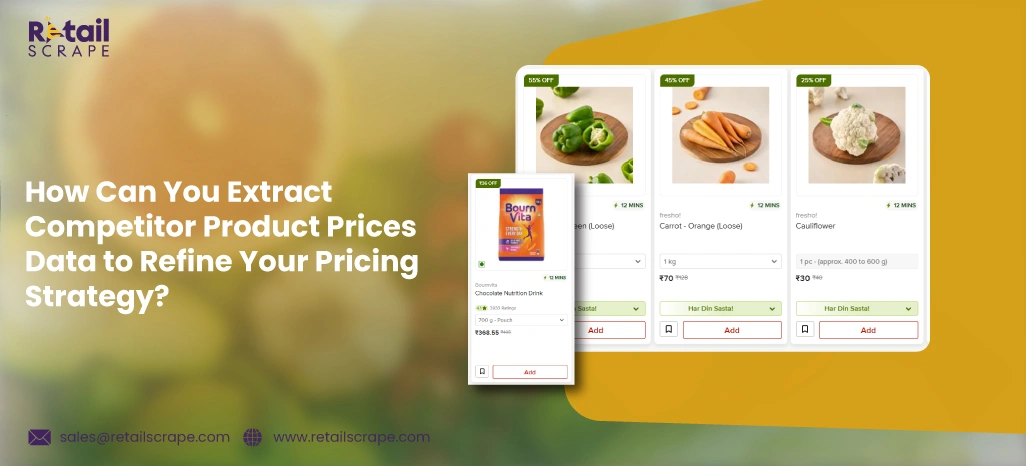
Introduction
In today’s fast-paced digital economy, pricing plays a crucial role in shaping consumer decisions. Businesses that fail to monitor how competitors price similar products risk losing market share, revenue, and customer trust. To remain competitive, brands need data-driven strategies that go beyond guesswork and assumptions.
One of the most effective ways to Extract Competitor Product Prices Data is by using automated, scalable methods that provide accurate, real-time insights. This approach enables businesses to understand market movements, align their pricing models, and respond promptly to shifts in demand or competition.
Why Competitive Price Monitoring Is Crucial Today?
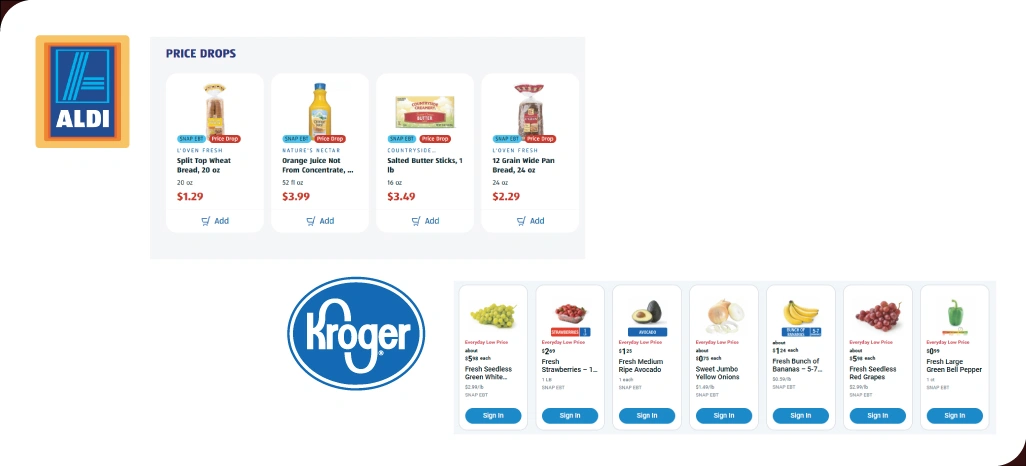
In today’s hyper-competitive landscape, price remains a key factor in consumer decision-making. Whether you’re operating in fashion, consumer electronics, or the grocery delivery space, buyers routinely scan multiple platforms to ensure they’re getting the best deal. That makes Monitoring Competitor Prices not just a smart strategy—but a business necessity.
Neglecting to keep tabs on competitor pricing can lead to:
- A steady loss of customers to brands with more attractive or responsive pricing.
- Inefficient promotional planning results in margin erosion.
- Missed opportunities to capitalize on pricing shifts and emerging trends in your niche.
Effective pricing isn’t just about slashing numbers to undercut rivals. It’s about positioning—delivering the correct value, at the right time, supported by real-time competitive pricing data.
Structured Ways to Collect Competitor Product Prices Data
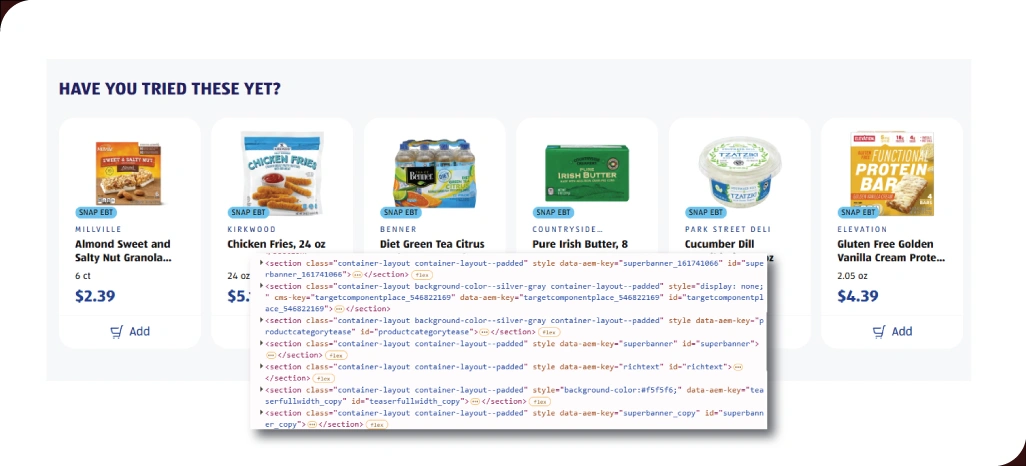
The ability to Extract Competitor Product Prices Data accurately and consistently is central to any pricing intelligence strategy. However, relying on outdated manual methods can slow progress and introduce data errors. The key lies in establishing a reliable and scalable approach powered by automation and intelligent tools.
Here are proven methods to build your data pipeline:
- Automated Web Crawling: Deploy crawlers to scan product pages and capture live pricing across multiple websites in real-time.
- API-Based Collection: When accessible, APIs offer clean, structured data directly from source platforms, enhancing reliability and security.
- Browser Extensions & Visual Tools: Ideal for quick checks and smaller datasets, but not designed for enterprise-scale extraction.
- Third-Party Platforms: Vendors provide tailored, ready-to-use datasets focused on specific competitors, SKUs, or categories.
Each method has its place, depending on the business's needs. What matters most is turning the raw feed into decision-ready pricing insights.
Smart Guidelines for Ethical and Effective Data Collection
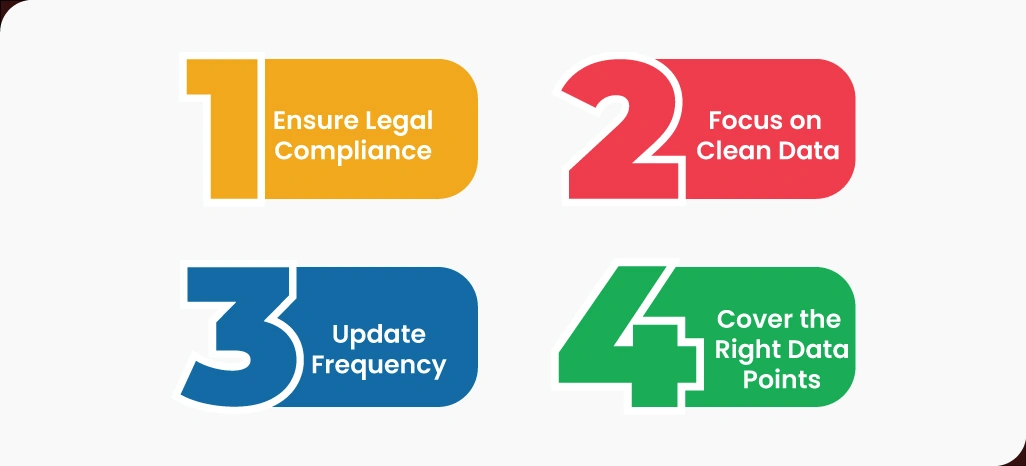
To maximize the impact of your data-driven pricing strategy, it’s essential to follow a few foundational practices that ensure data integrity and compliance with legal requirements.
Key best practices include:
- Ensure Legal Compliance: Respect platform policies, robots.txt directives, and regional data privacy regulations to maintain ethical standards.
- Focus on Clean Data: Your analysis is only as good as the data you ingest—ensure that it’s structured, current, and relevant.
- Update Frequency: Pricing is fluid, and stale data can mislead strategy. Keep collection schedules tight and consistent.
- Cover the Right Data Points: Go beyond price alone—track key attributes such as product name, size, SKU, brand, discounts, shipping charges, and availability.
A clear framework ensures your competitive pricing data is not only reliable but actionable across your organization.
Turning Pricing Data into Strategic Advantage
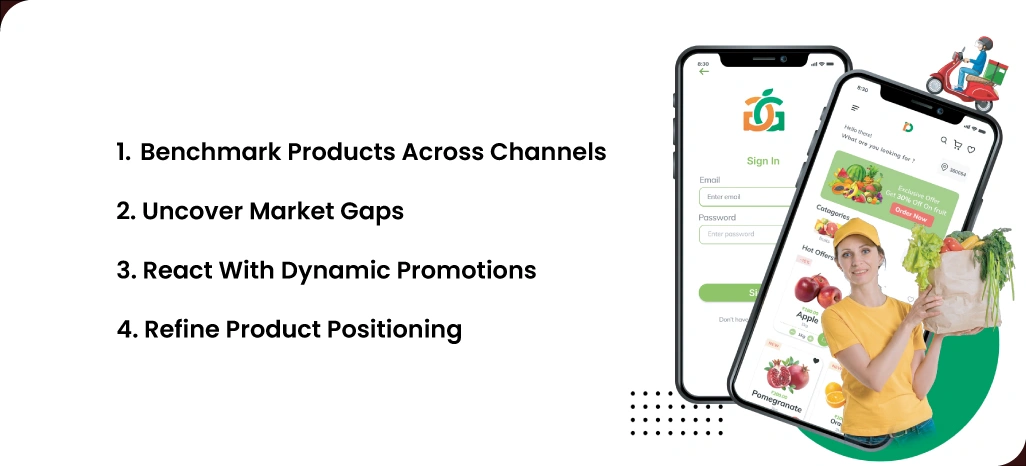
Collecting data is just the beginning—the real value lies in how you interpret and apply it. Once your systems consistently Extract Competitor Product Prices Data, the next phase is drawing insights that shape more innovative strategies.
Here’s how businesses can convert raw numbers into action:
- Benchmark Products Across Channels: Identify how similar products are priced by different retailers to set optimal price points.
- Uncover Market Gaps: Detect areas where pricing discrepancies signal untapped opportunities or potential to reposition your offerings.
- React With Dynamic Promotions: Align promotional timing and depth with your competitors to stay competitive in a crowded market.
- Refine Product Positioning: Determine whether your pricing aligns with the right value tier—premium, mid-range, or budget.
With a well-defined analytics setup, pricing becomes less reactive and more strategically driven by insight rather than guesswork.
Selecting the Right Tools for Price Data Extraction
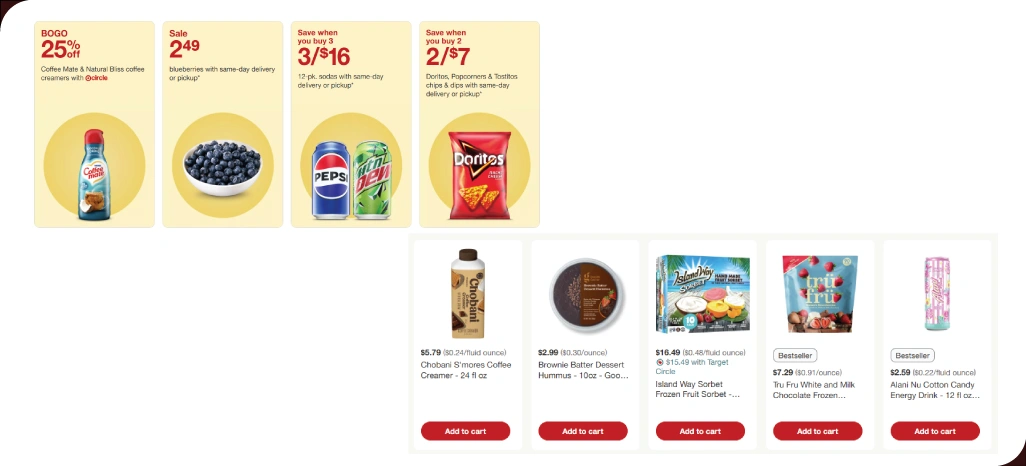
Selecting tools that match the scale, speed, and complexity of your needs is crucial for consistent pricing intelligence. Businesses today increasingly adopt specialized Product Prices Scraping Tools to automate high-volume extractions across platforms with accuracy and control.
The ideal solution should deliver:
- Support for scraping across multiple marketplaces and retailer websites.
- Ability to structure, normalize, and classify raw price data.
- Built-in error recovery, anti-blocking features like IP rotation, and rate limit handling.
- Flexibility for both on-demand and scheduled scraping processes.
For enterprises with specific requirements, a custom Price Data Scraper framework can be built to seamlessly integrate with internal business intelligence systems—enabling richer, real-time insights at scale.
Smart Market Moves with Real-Time Competitor Pricing Data

In today’s competitive landscape, brands are increasingly turning to E-Commerce Product Prices Data Extraction to monitor pricing shifts across platforms with precision. Rather than just reacting, this approach empowers retailers to forecast trends and shape more innovative pricing strategies before competitors do.
With the support of a robust Real-Time Price Monitoring Service, brands can stay in sync with market movements, protect their profit margins, and sustain customer loyalty in an environment where pricing is fluid and fast-moving.
Key benefits include:
- Instantly identifies competitor price changes across multiple channels.
- Enhances pricing agility to respond to promotions or stock changes.
- Helps detect underpricing or overpricing risks in real-time.
- Enables data-driven markdowns during seasonal shifts or surplus.
- Supports dynamic pricing models to optimize profit and demand.
Industry-Wide Use Cases for Pricing Intelligence
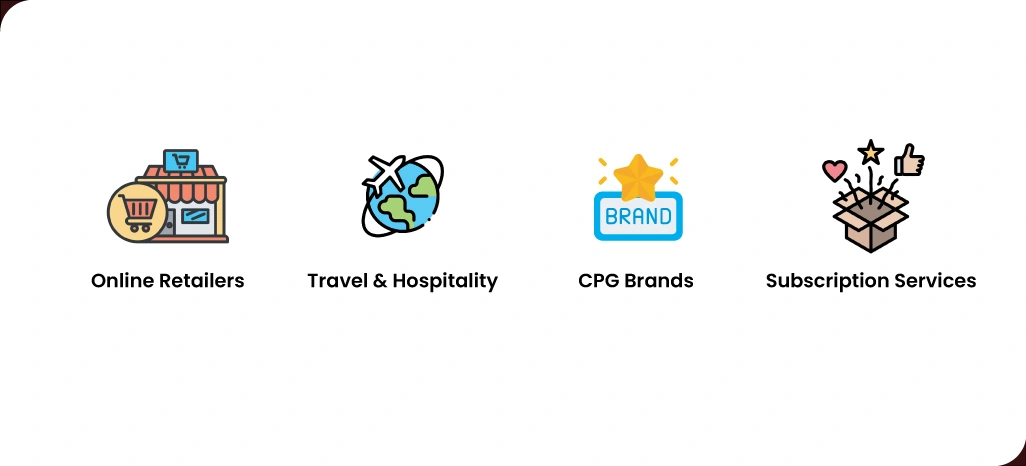
From electronics to FMCG, fashion to automotive, a wide range of sectors rely on pricing intelligence to drive smarter decisions, maximize revenue, and stay aligned with dynamic market movements.
Below are key industry-wise applications:
1. Online Retailers
E-commerce businesses rely on real-time pricing data to remain competitive and attract cost-sensitive shoppers.
- Automate dynamic pricing based on competitors’ product listings.
- Identify pricing gaps for best-selling or seasonal items.
- Monitor marketplace trends to anticipate price drops.
- Align pricing with customer demand and product performance to optimize revenue.
2. Travel & Hospitality
Hotels, airlines, and travel platforms use pricing intelligence to optimize rates and improve booking conversions.
- Adjust room or fare pricing based on availability and seasonality.
- Track competitor packages and promotions across travel portals.
- Analyze location-based demand to set surge or discount pricing.
- Enhance revenue management with competitor benchmarking.
3. CPG Brands (Consumer Packaged Goods)
For brands selling through retailers, understanding how products are priced in the market is essential.
- Monitor how retailers and distributors price your SKUs.
- Detect unauthorized price reductions by third-party sellers.
- Ensure price consistency across regions or platforms.
- Evaluate promotional impact on retail sales channels.
4. Subscription Services
Streaming, SaaS, and DTC platforms require pricing intelligence to stay aligned with user expectations and industry standards.
- Benchmark pricing against competitor service tiers.
- Analyze churn rates linked to pricing changes.
- Track regional pricing variations across platforms.
- Identify optimal price points for different subscription plans.
Across all industries, companies that actively Scrape Retail Pricing Strategy Data consistently make more intelligent pricing decisions—driving both customer satisfaction and sustained profitability.
Overcoming Key Challenges in Price Data Extraction
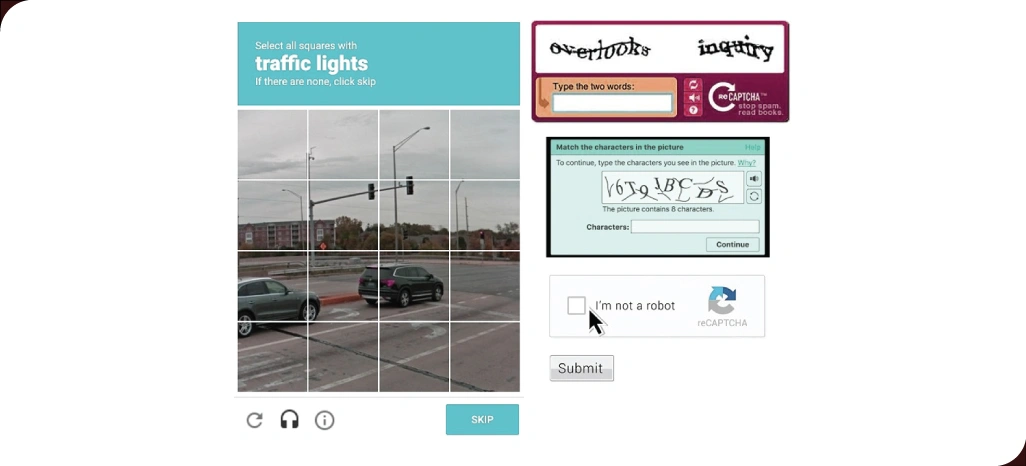
While extracting E-commerce product prices data can offer significant advantages, it comes with technical hurdles. Dynamic websites, anti-bot protections, and shifting site structures can quickly disrupt your data pipeline if not managed proactively.
To maintain data accuracy and continuity:
- Monitor site changes that could affect scraping scripts.
- Utilize scraping tools that are capable of bypassing CAPTCHA and dynamic loading.
- Optimize your pipelines to manage high-volume product data.
- Select tools that can accommodate multi-source product structures.
- Partner with specialized teams to mitigate scraping risks early.
By resolving these challenges early on, your E-Commerce Product Prices Data Extraction process stays efficient and uninterrupted.
Leveraging AI for Predictive Pricing Insights

As pricing intelligence evolves, Scrape Retail Pricing Strategy methods are increasingly complemented by artificial intelligence. Businesses that gather historical and real-time pricing data can now leverage predictive models, enabling them to forecast competitor moves rather than merely react to them.
How AI is shaping predictive pricing:
- Analyzes patterns in competitor behavior across seasons or events.
- Identifies gaps or opportunities in price positioning before they happen.
- Assists in dynamic pricing based on inventory or market demand.
- Test various price points with confidence before market changes occur.
- Improve customer value perception while protecting margins.
AI-driven insights give businesses a competitive edge, ensuring their pricing is not just reactive but also intelligently forward-thinking.
Strengthening Market Positioning with Competitor Data Insights
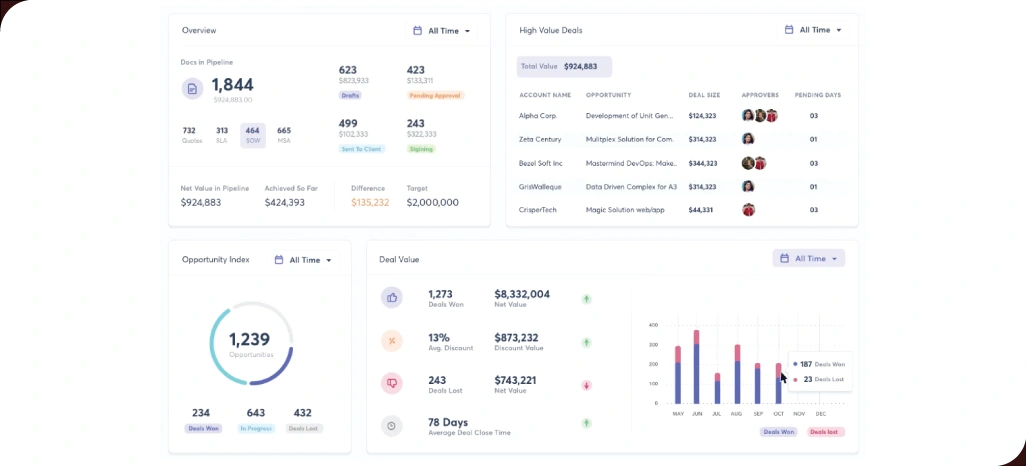
Real-time and accurate pricing data enable brands to assess their position in the competitive landscape. By consistently applying Competitor Pricing Strategies, companies can align their offerings with market expectations and craft more brilliant campaigns, loyalty schemes, and pricing tiers.
Use price data to sharpen your market position by:
- Comparing your price points with premium, mid-tier, and budget competitors.
- Identifying gaps where value-added pricing can differentiate your brand.
- Adjusting communication and messaging for each customer segment.
- Setting timelines for discounts, launches, and bundle offers.
- Informing distribution and pricing across retail or digital channels.
Strategic positioning, supported by timely competitor data, ensures your business remains competitive and relevant in any market condition.
How Retail Scrape Can Help You?

We make it a simple process to Extract Competitor Product Prices Data at scale, helping businesses drive smarter pricing decisions with minimal effort. Our data extraction services are designed to adapt to various industries, product categories, and dynamic pricing models—ensuring you stay ahead of market movements.
Whether you operate in e-commerce, retail, or manufacturing, we offer end-to-end support for structured and scalable competitive pricing analysis.
Here’s what we offer:
- Automated scraping across key competitor sites.
- Custom pricing datasets tailored to specific products or categories.
- Scheduled data delivery in your preferred format.
- Reliable infrastructure to handle large-scale data loads.
- Compliance-ready methods for ethical data collection.
- Integration with internal BI or analytics systems.
Whether you're adjusting prices daily or planning long-term strategies, our tailored Product Prices Scraping Tools ensure you always have accurate data at your fingertips.
Conclusion
In an increasingly competitive market landscape, the ability to Extract Competitor Product Prices Data is essential for businesses looking to maintain pricing agility and make smarter, data-informed decisions. It’s not about reacting fast—it’s about staying aligned with market behavior and anticipating trends before they impact your bottom line.
Whether you're refining your existing approach or building from scratch, we offer robust Product Price Scraping solutions tailored to your unique needs. Contact Retail Scrape now to schedule a personalized demo and see how our real-time data services can enhance your pricing strategy.


